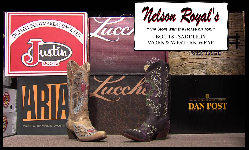Thrush-Busting Tips
By Eleanor Kellon, VMD
Once you’ve smelled it, you’ll never forget it! Here’s how to recognize and treat thrush.Preventing thrush is all about keeping your horse’s feet clean and dry. Picking them out daily is the first step. Photo by Heidi MeloccoThere’s much confusion about moisture and hoof health, but one thing is for sure: Wet ground conditions alone won’t cause thrush.
Causes: Thrush is caused by an anaerobic bacterium, meaning that it can live without oxygen. Poorly cleaned stalls, urine-soaked and manure-packed footing, and wet, muddy conditions are major factors that predispose your horse’s hoof to thrush. Additionally, poorly trimmed feet — hooves with contracted heels or overly high heels that trap debris inside the foot and around the frog — also contribute to your horse’s chances of contracting thrush.
But the primary cause of thrush is inadequately cleaning your horse’s feet. Anaerobic bacteria can’t live and multiply in air and light, but if you allow your horse’s foot to become a dark, wet, unsanitary sanctuary for these bacteria, they’ll move in and multiply, even feeding on the frog tissue itself.
Symptoms: Thrush is characterized by a dark, sticky discharge and a foul, rotting smell. The frog may be covered with this discharge, or it may only build up deep in the frog’s grooves. Thrush is usually associated with poor frog growth and disintegration of the frog tissue.
Treatment: If your horse gets thrush, first ask you farrier to trim your horse’s hooves. He or she can leave the crevices beside the frog wide open, while paring away any obviously infected tissue. Then, pick out your horse’s feet every day, paying particular attention to the frog crevices, until the thrush has cleared up.
Thrush is highly sensitive to air and drying, so trimming and cleaning will cure most early cases. However, if thrush persists, you can treat it with dilute bleach (about 50:50 bleach and water) or hydrogen peroxide. There are also several commercial applications for thrush, but ask your veterinarian for advice — sometimes these chemicals can be too harsh on the tissues.























